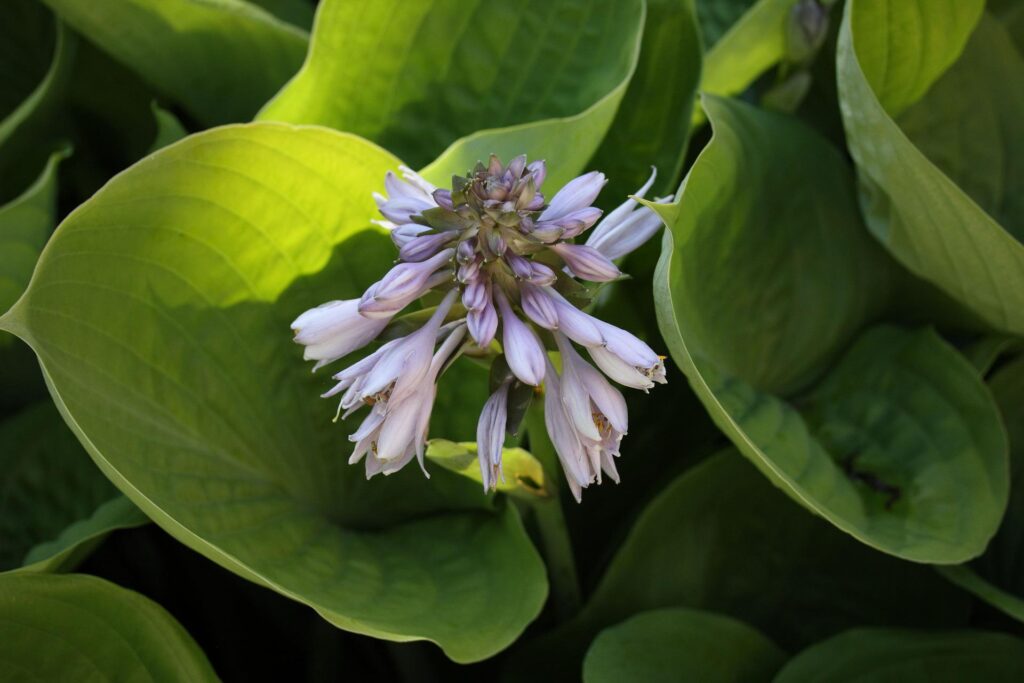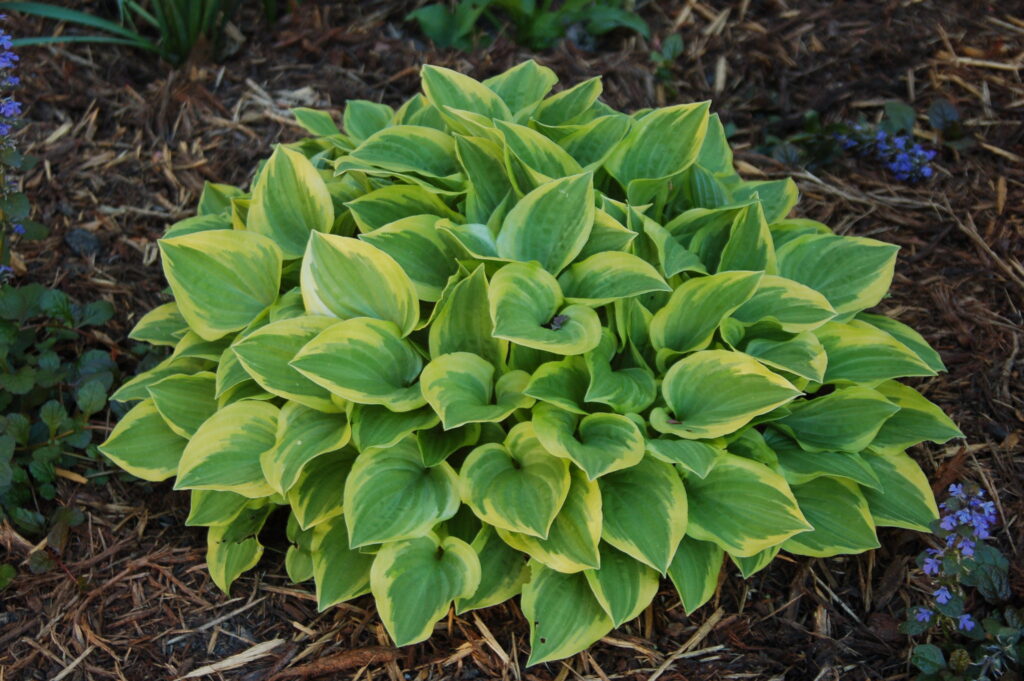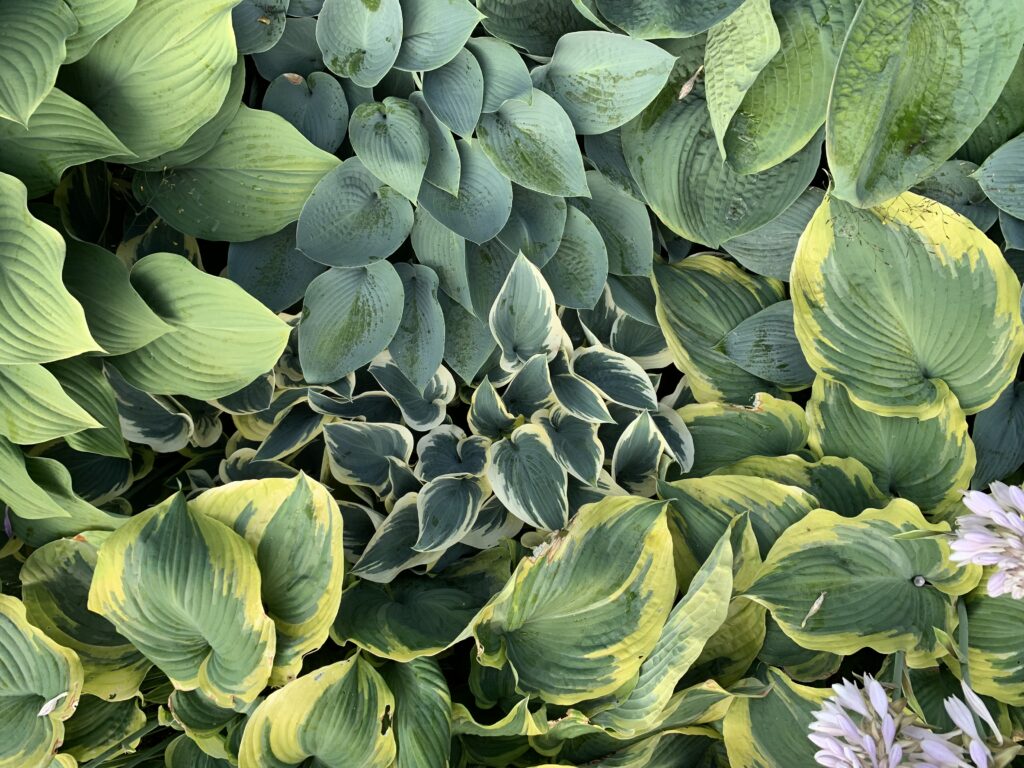How to Plant, Grow, and Care for Hosta – Plantain Lily
Hosta plants are a gardener’s perennial delight. Because of their rich foliage and ease of care, they are great for a low-maintenance landscape. Originally from the Orient and introduced to Europe in the 1700s, there are now over 2.500 varieties with such variation in leaf form, size, and texture that an entire garden might be devoted to cultivating hostas alone. While hosta care is considered simple, knowing how to cultivate hostas may help the plants reach their full garden potential.
Hosta growers answering hosta questions:
How do I grow hostas from seeds?
You should first be aware that hosta plants grown from non-hybridized seeds are most likely to produce only a very weak green plant with little or no desirable features. I prefer to store the seeds in a dry cool dark area until December or January. At that time I plant them in a shallow container covered only slightly with moist potting soil and placed in a warm sunny spot such as a south facing window and supplemented with artificial light. The seeds can be started as early as December if started inside and they should germinate after a couple of weeks. Keep the soil only slightly moist until the leaves begin to form and then moisten the plants with a gentle mist.
After the plants have produced at least three leaves begin to cull the undesirables and pot the remaining plants into larger individual cells. Continue the culling process until you have either nothing left or plant them outside after the climate becomes suitable to support growth. You can continue to repot them into larger pots if you desire rather than planting them in the ground. Use a weak solution of liquid fertilizer applied at least once a month until they show considerable progressive growth.

Usually the only hosta to reproduce a seedling true to the mother plant is Hosta Ventricosa.
Unless the flowers were pollinated by hand or by nature your chances of obtaining an acceptable plant from seeds are very slim. It can be fun though even if you have to discard all of the seedlings and you will have a head start on the procedure if you later decide to try pollinating the blooms.
When is the best time to fertilize hostas?
The best time to fertilize Hostas is in the late winter or the very early spring. This is before they start to break ground. You should use a balanced slow release fertilizer such as 13-13-13. You can also fertilize them during the growing season using a weak liquid mixture of a 20-20-20 fertilizer, with the emphasize on weak.
What fertilizer should I use for my hostas?
There is much debate over the best fertilizer for hostas. Many persons find that granular or solid forms are better; then there are those that prefer foliar feeding. After the issue of method of application is resolved, there is the question of best nitrogen-potassium-phosphorus ratios. The norm seems to be an application of around 10-10-10, three to four times per year.
For those people who tend toward organic gardening, there are several products that have worked for hosta gardeners. Some gardeners use Milorganite or other treated sewage residue. Although there is an initial odor, it quickly dissipates. Another alternative is animal manure, but, after considering the price of hauling, it is not cheap and the potential for burning the plants with fresh manure is greater. To some, a more pleasant smelling organic fertilizer, at 8% nitrogen, is soybean meal. Rich in other elements, as well as having a protein level of 46%, you practically could spread it on your corn flakes.
If you are interested in how these various fertilizers compare; with regard to composition in the other fertilizers, Milorganite is 6-2-0, and Miracle Grow lawn food is 36-6-6 (generally speaking about 6 times more concentrated than cottonseed meal), Miracid plant food is 30-10-10, but the most common used for hosta is either 20-20-20 or 10-10-10. The big difference appears to be in other components: Milorganite has 4% iron, both Miracle Grow products have .325% chelated iron, and cottonseed meal has 0%. Only Soybean meal appears to have any significant protein content! At one time Milorganite was not recommended for use on property with well water, but that prohibition no longer pertains as they have developed a means to remove the heavy metals.

Do any hostas do well in the sun?
Typically the green and the Gold Hostas or Gold Edger Hostas tolerate the sun the best. Blue Hostas or Purple Hostas cannot tolerate sun very well at all, they require heavy shade. If you wish to plant Hostas in an area that only has partial shade, make sure to avoid the afternoon sun. Green and Gold Hostas planted in an area that receives morning sun should do just fine.
In northern regions, if hosta plants are given sufficient water, e.g., watered in a manner resembling the watering conditions in the Far east from where they come the Blue Hostas actually do better in more sun than the green and Gold Hostas except plantaginea and its progeny.
Can hostas grow anywhere in the United States?
Hostas can grow throughout the Mid-Atlantic, East Coast, Midwest, Northwest, and the Southeastern United States. But they will not grow well in the deep South (Florida and the southern parts of Georgia, Alabama, Mississippi, Louisiana, and Texas), Southwest, and West. This does not mean they will not grow at all, it just means they will not grow as well.
There are ardent growers in Texas, Arizona and Northern Florida that have found certain species and their progeny survive as more than annuals, in some cases if properly watered thrive.
Should we cut off the stems that are left after blooming hostas?
You can definitely cut off the stems (scapes). It will not damage your plants at all. If you are not doing anything with the seeds, you can cut them back as soon as the flowers finish blooming. If you are not concerned about the flowers at all, you can even cut the scapes before the flowers bloom. This will allow the plant to grow more quickly. This is a good idea if the plant has not matured yet. Once it has matured, you can then enjoy the flowers.

How do you recommend planting a hosta?
You should plant the hosta in an area that is shady and protected from the afternoon sun. Mix the soil with some compost and make sure that the soil mixture is loose. You can also add some slow release fertilizer. Make sure that the root clump is level to the ground and water it well.